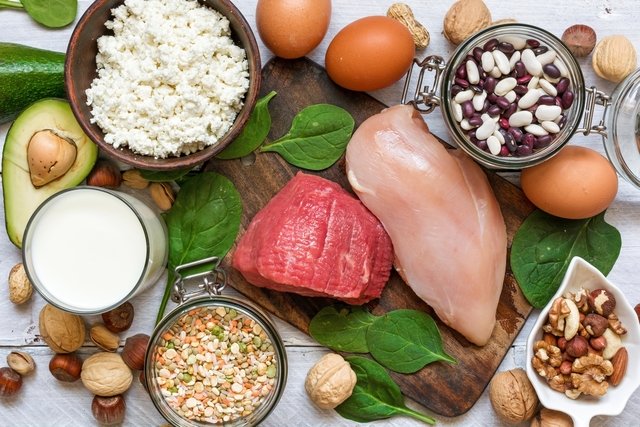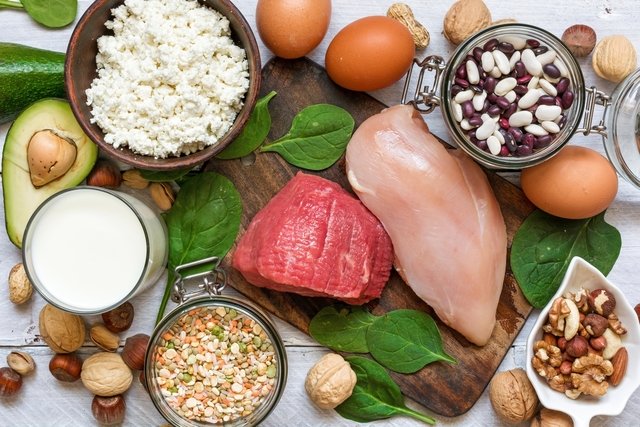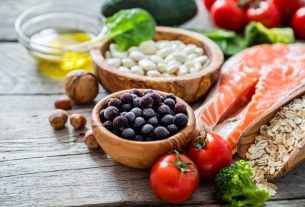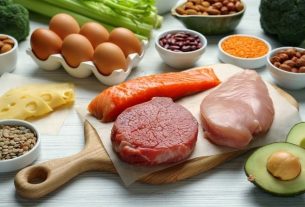Foods rich in vitamin B6, such as lentils, bananas, spinach, salmon and peanuts, are essential for the proper functioning of metabolism and the brain, as this vitamin acts in several metabolic reactions and in the development of the central nervous system.
Furthermore, foods rich in vitamin B6 also help to strengthen the immune system and balance the levels of homocysteine in the blood, an amino acid that, when high, can cause changes in blood vessels, leading to the emergence of heart diseases, such as stroke, thrombosis or heart attack, for example. Discover other benefits of vitamin B6.
Vitamin B6, also known as pyridoxine, is present in many foods and, therefore, cases of deficiency are rare. However, the need for this vitamin may increase in certain situations, such as pregnancy, regular consumption of alcoholic beverages and people with autoimmune diseases, such as Crohn’s disease or rheumatoid arthritis. In these cases, the doctor or nutritionist may also recommend supplementation with vitamin B6.

Foods rich in vitamin B6
The following table shows the amount of vitamin B6 present in each 100g of food:
In addition to these foods, vitamin B6 can also be found in foods such as grapes, rice, artichoke orange juice, yogurt, broccoli, cauliflower, cooked corn, milk, strawberries, cottage cheese, boiled eggs, black beans, cooked oats , pumpkin seed and cocoa.
Recommended daily amount
The recommended daily amount of vitamin B6 is relatively low, varying according to age, sex and stage of life. The vitamin B6 recommendation for men and women between 14 and 50 years old is 1.3 mg per day. For women who are pregnant, the recommended amount of this vitamin is 1.9 mg per day. See the recommended vitamin B6 for each age.
Vitamin B6 supplementation
Most people can obtain adequate amounts of vitamin B6 from their diet, however, in some cases, supplementation may be necessary.
Vitamin B6 is available as pyridoxine hydrochloride in some multivitamin supplements, such as vitamin B complex supplement, for example. This vitamin can also be found as a single vitamin B6 supplement, with one capsule per day of 50 mg or 100 mg being recommended, which should be consumed together with the main meals, and it is essential that it is prescribed by a doctor or nutritionist.
Bibliography
- NATIONAL INSTITUTE OF HEALTH – OFFICE OF DIETARY SYPLEMENTS. Nutrient Recommendations: Dietary Reference Intakes (DRI). 2011. Available at: <https://ods.od.nih.gov/HealthInformation/Dietary_Reference_Intakes.aspx>. Accessed on April 12, 2022
- BRASIL INTERNATIONAL LIFE SCIENCES INSTITUTE DO BRASIL. Fully recognized functions of nutrients: B vitamins. 2018. Available at: <https://ilsibrasil.org/wp-content/uploads/sites/9/2018/10/Fasc%C3%ADculo-COMPLEXO-B-009.pdf>. Accessed on April 12, 2022
- FOOD COMPOSITION. Portuguese Food Information Platform: White sugar. Available at: <http://portfir.insa.pt/foodcomp/food?22422>. Accessed on April 12, 2022
- UNITED STATES DEPARTMENT OF AGRICULTURE. Food Data Central. Available at: <https://fdc.nal.usda.gov/ndb/search/list>. Accessed on April 12, 2022
- NATIONAL INSTITUTES OF HEALTH. Fact Sheet for Health Professionals: vitamin B6. Available at: <https://ods.od.nih.gov/factsheets/VitaminB6-HealthProfessional/#h3>. Accessed on April 12, 2022

Sign up for our newsletter and stay up to date with exclusive news
that can transform your routine!
Warning: Undefined array key "title" in /home/storelat/public_html/wp-content/plugins/link-whisper-premium/templates/frontend/related-posts.php on line 12
Warning: Undefined array key "title_tag" in /home/storelat/public_html/wp-content/plugins/link-whisper-premium/templates/frontend/related-posts.php on line 13





